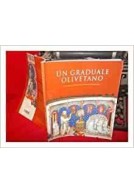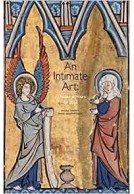The Thing of Mine I Have Loved Best: Meaningful Jewels (Paperback)
(click here for international delivery rates)
Need a currency converter? Check XE.com for live rates
This book concerns objects that were “meaningful” jewels, a term we choose to designate a wide range of precious wearable objects that had particular meaning. An Anglo-Saxon glass pendant, a Spanish “magic belt,” a Mexican lantern pendant (once adorned with New World feathers), and an Imperial Memento Mori Skull, these are just a few of the remarkable objects included. These intimate meaningful
jewels are meant to be opened, touched, manipulated, pinned, gathered and strung. In the same series of books on jewelry inaugurated in 2007 with Toward an Art History of Medieval Rings (repr. 2014), the present volume divides the jewels into six sections (such as “Ways and Means of Prayer,” “Hidden and Revealed,” “Kissed and Touched”) that creatively explore the complex meanings these objects
held for their owners. Cynthia Hahn, internationally known for her explorative ground-breaking studies of the reliquary arts, has written the stimulating essays and accompanying entries in the body of the book. She has collaborated here with Beatriz Chadour-Sampson, who, with her great mastery of the history of jewelry, has contributed a scholarly catalogue that authenticates, describes, and situates each
object. Together the essays, entries, and catalogue create a context that helps us see this jewelry in a new way and adds new research that establishes the historical and artistic importance of a relatively little-studied group of “meaningful jewels.” In the words of Cynthia Hahn, “Jewels, and that word here includes jewelry, are literally the foundation of art in the Middle Ages. It is surely not irrelevant that
these things are so beautiful.”
Sandra Hindman, Founder and President of Les Enluminures states “I have bought these pieces one by one over a period of fi fteen years (and put them aside with this project in mind), and to my knowledge no such collection has been assembled, studied, and exhibited in modern times”. She goes on to say, “Not at all unlike the medieval manuscripts I also present, they are some of the most intimate
of art objects from the Middle Ages.”














